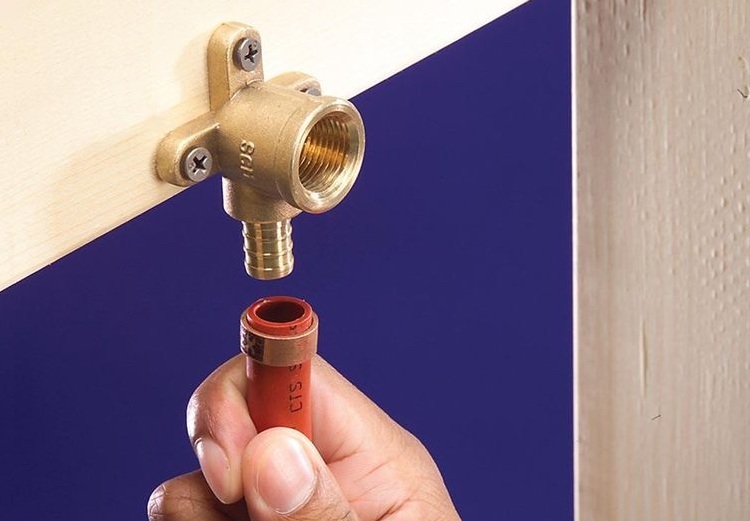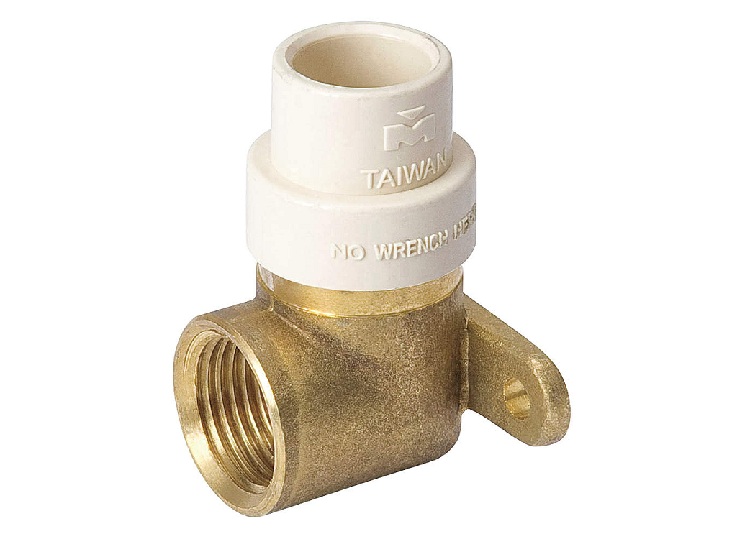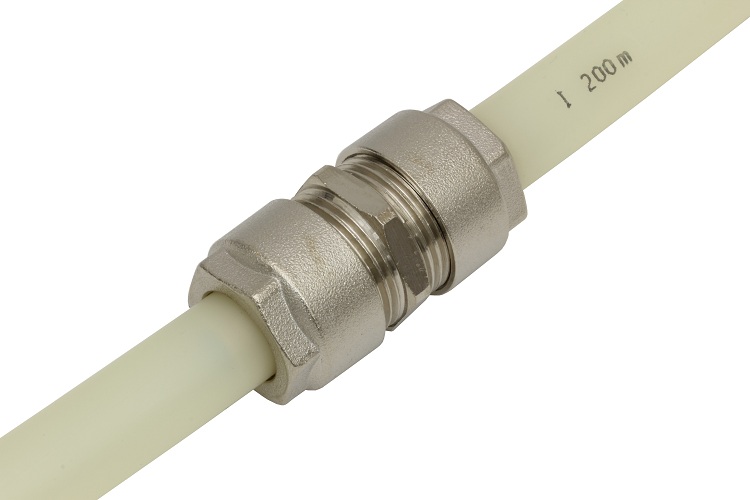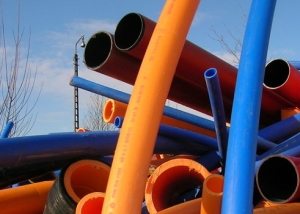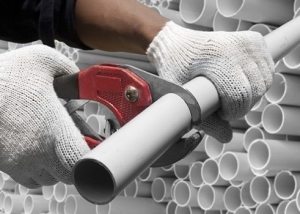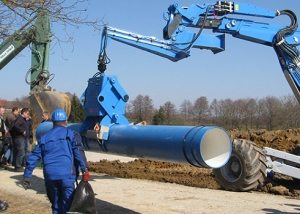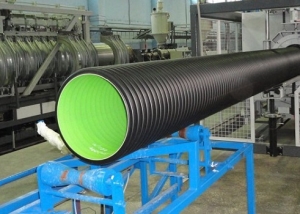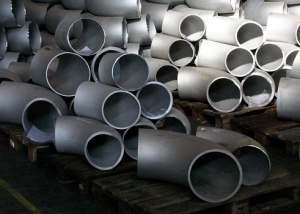In order to complete the installation of plumbing fixtures, a large number of special devices have been created: fittings, locking elements, bends. With their help, the contractor will be able to attach the pipelines to the vertical and horizontal planes and lay them along the trajectories of the most intricate configuration. A water socket for plastic pipes and all their other types is one of those elements that can not be avoided when installing a water supply system in the bathroom.
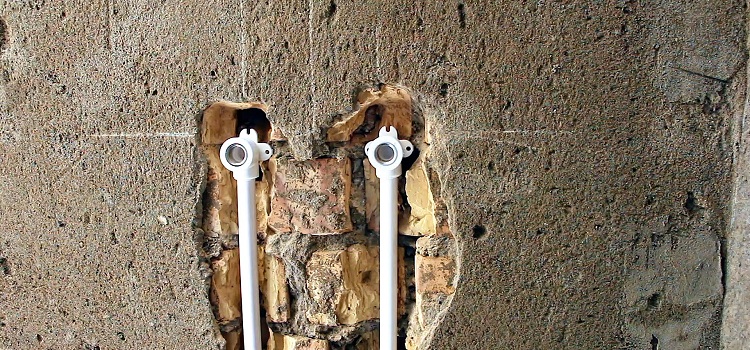
A water outlet is a fitting with a fixture, with the help of which faucets are connected to water pipes
Content
What it is
A water socket is a specially designed fitting with which water pipes are mounted inside an apartment or house. Most often they are used in the bathroom and in the kitchen.
Everyone knows how complex and ramified the plumbing system is in these rooms. Separate lines are connected to the water heater, sink, bathtub. The presence of a heating system does not add aesthetics to this web of pipes and faucets, especially if the room is small. In this case, you can solve the problem by mounting a water supply branch inside the wall. This method is also called decorative stroke, since all communications are hidden from the human eye, do not impair appearance and do not interfere. Then you will need water sockets, which serve as a kind of adapter between the pipeline hidden inside and the external plumbing.
Design features
For the installation of modern water supply systems, metal-plastic pipes and fittings are often used. This material is not susceptible to corrosion, durable and easy to install, as well as to maintain. Corresponding to the intended purpose connecting elements are selected for such systems: tees, press connections, etc. No less popular are polypropylene, polyvinyl chloride and other pipes, fittings for them are also available in a wide assortment.
As for the water outlet, it acts as a fastening of the outlets of the water supply system to the wall and connecting them to the taps. A feature of this element is that its design includes a mounting bracket and a fitting adapter (socket). The mounting plate is usually made of steel because of its higher strength compared to similar samples of metal or plastic. On this part itself is a connector in the form of a coupling. On one side there is a thread for connecting a water supply hose or mixer, and on the other side it is connected to a water supply system.
Varieties
Water outlets are classified based on a number of criteria. Consider them in more detail.
1. Scope of application. According to this criterion, water outlets are:
- for cold water supply;
- for supplying hot water;
- for heating.
The last two types of water outlets are very similar.
On a note! They are characterized by a high coefficient of strength, and as a raw material for the manufacture of such fittings of a metal-plastic pipe, a polymer is used that can withstand high temperatures and is able to withstand its significant differences.
Another thing is with cold water systems. They are created using fittings for metal-plastic pipes made of plastic mass that does not lose its strength properties at a temperature not exceeding +30 ۫ C.
2. The material of manufacture. Water sockets are made from:
- galvanized iron;
- brass and bronze;
- of stainless steel.
In addition, advances in polymer technology have created the prerequisites for the production of such elements from PVC or polypropylene. This was stated above.
3. The configuration and shape of the connectors. According to this criterion, water outlets are of the following types:
- with short or long strap for fastening;
- with three and with two holes for fastening;
- single and double.
How pipes connect
For metal-reinforced pipes, this procedure is most often performed using a fitting whose design includes a collet for plastic pipes. This element is a specific split sleeve with a spring property. It is convenient to use when connecting cylindrical products.
The dimensions of the fittings are selected so that the petals of the collet inserted into the metal-plastic pipe are pressed on its inner surface and tightly pressed the outer side of the tube element of the engineering branch to be created to the cartridge of this part. The described principle of operation has become the reason that a connecting element of this type is also called a clamping element. In fact, it serves as a kind of adapter in pipelines for various purposes for organizing a detachable connection of pipes with both identical and different cross-sections. The manufacture of collets for metal pipes is made of brass GOST 15527-70.
In general, detachable fittings are of the following types:
- Eurocone for joining metal-plastic pipes;
- tee (three collets, two collets - the union, two collets - a nut);
- crosspiece;
- crimp fitting. You can use such a part to connect not only metal-plastic, but also steel, as well as cast-iron pipe products. Installing a crimp fitting for plastic pipes does not require work experience or special skills;
- adapters (collet - collet, collet - fitting, collet - nut);
- corner (collets - nut, collets - fitting, collets - collets);
- push fittings for connecting plastic pipes.
It should be noted that the collet connection requires a periodic (about once every six months) leak test. Considered tubular products are also connected indivisibly. This is usually done with the use of fittings for a press for plastic pipes.
As for pipes made of PP or PVC, they are most often connected by soldering. Water sockets are attached in the same way - by heating with a soldering iron and docking parts in hot form. Such a connection is integral. Collapsible can be obtained by using brass or steel press fittings.
Wiring diagram for the bathroom and toilet
When performing plumbing work in these rooms, 3 methods of wiring metal-plastic pipe products can be used.
Serial connection system. This option provides for the connection of each plumbing fixture to the main pipe using a separate tee. It is relevant for bathtubs in which there is a minimum number of objects (mixer, washing machine). A sequential scheme can be implemented already upon completion of finishing work in the room by open laying. The assembly process looks quite simple: the pipe is laid from object to object, and a supply element is simultaneously withdrawn from the tee.
On a note! Plus of this option is minimal financial costs. But it should be borne in mind that due to insufficient pressure the system can work intermittently.
Wiring with bushing sockets. Here the technique is similar, only sockets are used, not tees. The greatest distribution of such a scheme was in private homes, since it involves the laying of pipes of large lengths.Here you need to know that to ensure the necessary pressure you will need to install an additional pump.
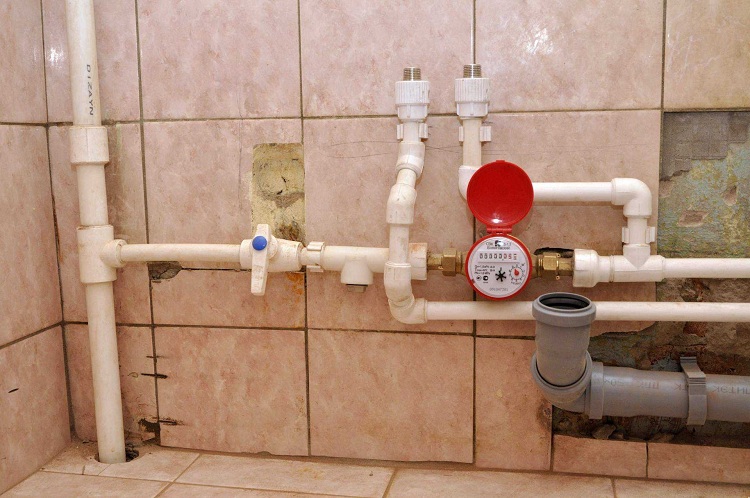
With a consistent wiring diagram, the water supply can be laid openly, without breaking the walls under pipes and water sockets
Efficient collector system. This practical and reliable option involves connecting to the central pipe of each object through a supply pair. The collector for metal-plastic pipes allows you to turn off or adjust the water supply to a single plumbing fixture. The collector is placed together with the regulating devices in a special cabinet. Such a technical solution has the following advantage: if one of the objects (mixer, washing machine) fails, there is no need to completely disconnect the bath from the water supply - just turn off the corresponding shut-off valve.
Installation of water sockets
The following methods have been developed for this operation:
- hidden (countersunk) on anchor dowels.
- secret on cement-sand mortar;
- hidden on mounting foam;
- surface mounting plate;
- surface anchor dowels.
In the first three cases, the water outlet is installed in the strob, which was created for the pipe itself. Thus, only the upper part of the part with a threaded connection protrudes from the wall. When implementing this method, special requirements are imposed on the size of fittings for plastic pipes. This is due to the fact that there is a certain distance between the bottom of the strobe and the water outlet. The fitting of this parameter is carried out using wedges - home-made wooden stands. Meanwhile, with the secret method, the use of water outlets of any configuration is allowed.
Fastening with anchor dowels is performed in the following sequence:
- the water socket is connected to the pipe;
- having attached this fitting to the bottom of the gate, mark the places of fastenings;
- drill holes whose diameter must match the value of this parameter of the anchor and a depth of 3 mm greater than the length of this fixture;
- attach the water outlet to the wall, combine its installation places with holes;
- insert the anchor nails, and then hammer them.
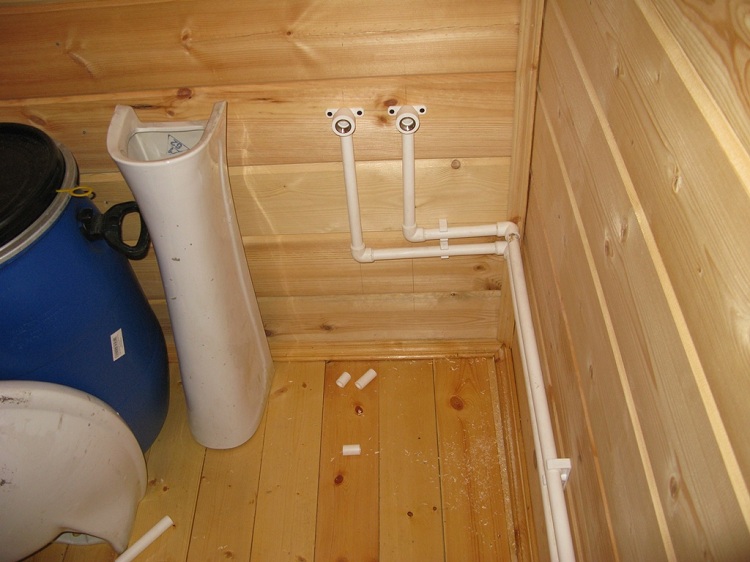
The method of fixing water outlets depends on the wall material and the method of laying the water system
Advice! Due to the presence of stray currents, flush mounting of metal water sockets is not recommended. To do this, choose fittings made of polypropylene or polyvinyl chloride.
The above sequence of actions is performed for both types of installation with anchor dowels - hidden and surface.
Hidden installation of the water outlet on the mounting foam is as follows:
- clean the bottom of the strobes;
- determine the size of the wood gasket. Its thickness should not be more than 1 millimeter;
- connect the water outlet to the pipe;
- Moisten the bottom of the gate and apply a layer of mounting foam 1 cm thick to the size of the fitting:
- insert the gasket and press firmly;
- apply the same layer of mounting foam already to the gasket, press the water outlet against it and fix it in the pressed state. Excess foam is cut off after an hour.
Installation on a cement-sand mixture begins with connecting the water outlet to the pipe. Then adjust the distance between this fitting and the bottom of the gate. Then securely fasten the water socket. It is best to do this by inserting a wooden or metal rod in a row between this part and, for example, the opposite wall. After doing this, cover the fitting and crevices with mortar. Remove the spacer after two days, rub the surface and grind it. A cement-sand mixture with water is prepared in a ratio of 3: 1. It should not spill out of the strobes.
A water outlet is a mandatory attribute of the water supply system of a house or apartment. Being firmly fixed, it protects the engineering communications from vibrations arising from the operation of household plumbing devices.
